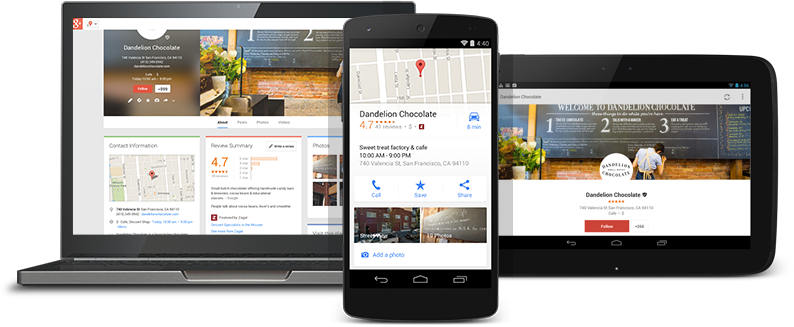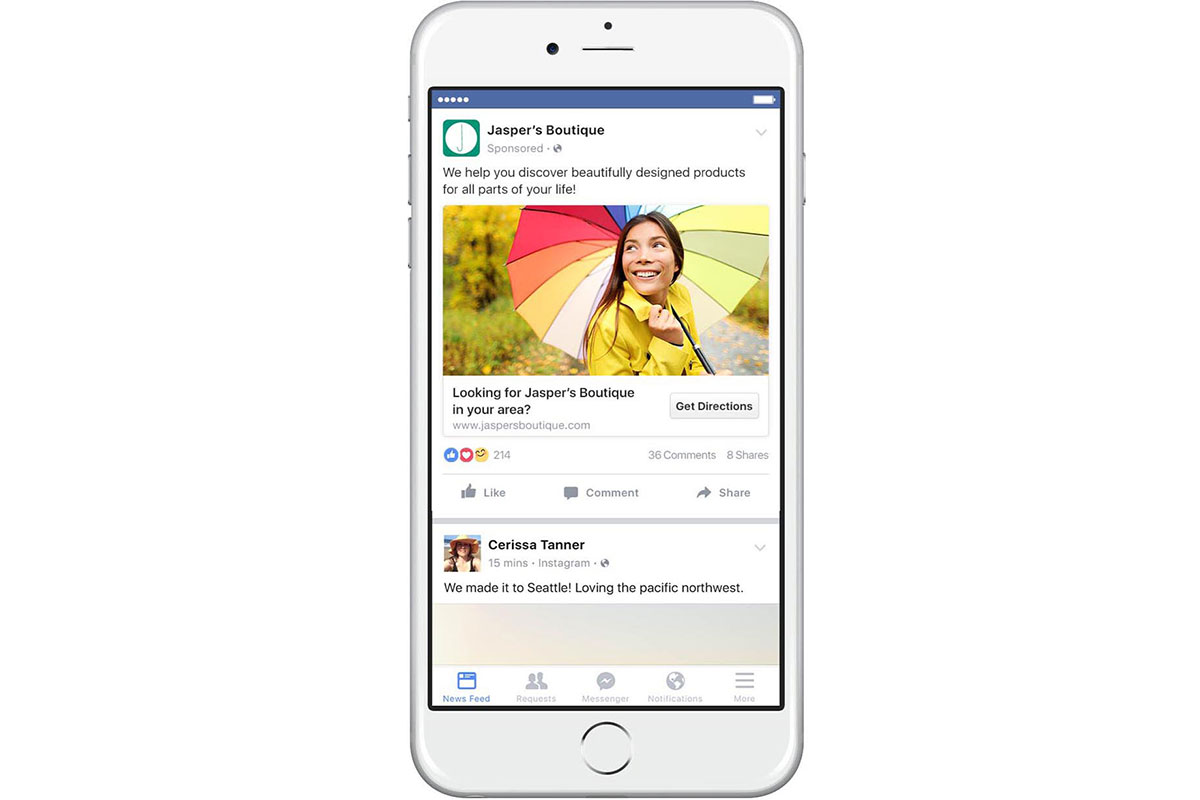Contents
The internet-age has opened up a wide range of opportunities for small businesses to connect with potential clients at a much lower cost than ever before. With that said, unless you approach digital marketing with some know-how and a clear set of goals, it can become a confusing and expensive exercise.
As a former Head of Digital at an Australian digital marketing agency, I have worked with small start-ups to large blue chip clients. Smaller sized businesses often feel they might not be able to compete with larger clients due to budget constraints, and while this can be true in some areas of digital, it is definitely not the case across the board.
If you have clear goals, reasonable expectations and the right strategy, you can utilise targeting via Search Engines (Google, Bing etc ) and Social Media websites (Facebook, Instagram etc) to specifically target your clients without the need for a large budget.
Outlined below are 5 digital marketing areas that you need to have in place in 2018. These are all things that you can do yourself in-house without the need to spend any money on a freelancer or an agency. However, if you struggle with IT, then I highly recommend speaking with an agency or a freelancer as they can action what you need to be completed in far less time and often to a high standard. Let’s dive in.
1. Set up a Google My Business profile
If you have a website (and even if you do not), I would highly recommend creating a listing for your business on Google My Business as this can get you ranking in the ‘local’ maps results with little to no effort. You can outrank big name brands due to your office location and the location of the searcher. It costs nothing and can be a great quick win.

You will need to verify your business often via a postcard pin they send out to you, so ensure
you fill in all your details correctly including website, phone number, office hours, logo etc. The more complete the listing, the more likely Google will show you.
2. Get A Website (and Keep It Updated!)
As we are now in 2018, I do not think there is any business that should not have a website. Of course, there are exceptions to every rule, but a website can be a simple one-page site – think of it as an online business card.
The majority of businesses do understand they need a website and this can be a tricky area for many startups thinking about their budget. You can spend thousands on a website and it all depends on what you require. If you are mindful of budget then I would recommend a solution such as Squarespace (my preference) or Wix.
If you are primarily an eCommerce store, then a solution such as Shopify or Maropost are brilliant.
These platforms pretty much do everything a custom built WordPress website can do at a fraction of the cost. Moreover, they are fully supported, so if a new mobile phone comes to market, they will update their platform to handle it, where a custom built website would require additional programming costs. You may need to still employ a designer even for these affordable solutions I just listed, but the cost should be lower than $1000.
Custom built websites definitely have their place, but these are often for larger businesses that really want to personalise certain aspects of their digital interaction with a client or who want to integrate into other business systems.
If you already have a website, then you should keep it updated and that means revisiting the design every 18-24 months. If you don’t, your website will become dated and will not respond to mobile devices correctly, especially if you have a custom built website. Customers are very savvy these days and will often Google your business before dealing with you. Having a clean, modern website gives a good impression and encourages the enquiry.
3. Track Everything and Measure results With Google Analytics
OK, so we have discussed having a Google My business listing as a bare minimum for your digital marketing efforts, along with a website that is kept updated every 18 to 24 months. As discussed you can do this for a few hundred dollars a year and some IT know-how, or if you need some assistance, the cost should be under $1000. So far so good for smaller budgets.
When you do have your website in place, installing Google Analytics is a must as it allows you to track the success of any marketing and advertising efforts. Google Analytics is very simple to install, but again you may require some assistance to do this if you are not IT confident.

Google Analytics can tell you:
- how many visits per day you have had,
- where they came from,
- how long they spent on your website,
- if you have activated goal tracking (which you should),
- how many enquiries you have had and;
- be able to attribute them to a specific source such as Google Organic search or Facebook Ads.
As you can imagine, if you are spending hundreds or thousands of dollars on Facebook Ads or Google Adwords Ads, then knowing if this advertising spend is generating actual hard leads is very valuable data to have.
In many ways, this is a key reason why digital marketing is superior to many businesses, both large and small when compared with traditional marketing channels, as you can drill down into the data and see exactly what is giving you a return (down to the keyword used and advert clicked) without any ambiguity.
Google Analytics is a free service, so again no costs. You need to install the code which as stated is simple enough and then configure your goal tracking which can require technical assistance. It should not take a good programmer more than a few hours to get this all done (of course there can be exceptions depending on the goals you need to be tracked). Cost wise you should be under a few hundred dollars, and if you have a website and if you spend ANY money on digital advertising, Google Analytics is a must.
4. Leverage Social Media, But Be Smart
Social Media is a great tool and can be used to reach the right audience with the right message. There are a lot of different social media channels such as Facebook, Instagram, Twitter and LinkedIn, so while it is a good idea to be on as many as you can to reach as many customers as you can, this is not always the right move.

You need to be able to dedicate adequate time, effort and resources into each social media channel, so if you have limited resources, pick just one social platform and focus on that. Again, while you can do a lot of this work yourself, if you need technical assistance then the costs can be low to get someone to set you up a brand profile page on any social media platform.
Facebook is one of the more popular channels for brands as it is widely used across many age groups. If you feel it aligns with your business, then develop a Facebook page, create a good cover photo, fill in your business details, add your logo and ensure the page looks professional and complete.Trust me people will search for your business before they decide to purchase from you. We call it ‘social proof’ as they are looking to make sure your company is legitimate and used by other people.
Some industries may not be geared towards Facebook to deliver their primary goal, for example a mining executive recruitment company. In this case you’d probably be better off utilising LinkedIn and using their ad platform to target mining related executives. Or if your business is heavily visual, such as an interior designer, then Instagram could be an ideal medium to use.
Once you have chosen a social media channel (or channels), you need to get started with developing an organic content strategy each month. So rather than just posting on the day, it is best practice to plan your posts the month before. Posts should be varied and you should avoid ‘selling’. The idea of social media is to connect with clients as a brand sharing useful information, images, other media and news.
Again, part of the reason you need to do this is to keep your page updated. As mentioned above users will search for your business, and if you have not posted in the last 12 months, it does not send a good brand signal.
Organic reach on many social media platforms is very limited due to their algorithms, so we will discuss the need to have a budget for you social advert spend in the next section to get the necessary audience reach.
5. Advertising On Search & Social – Be Smart
If you have a social media page, then you will need to look at using some advertising budget to drive the reach of your posts. Over the years many social media platforms have lowered the organic (non-paid) reach so that brands now need to pay money to reach their customers. While the additional cost for brands is not great, it is still affordable, and you can target effectively on platforms such as Facebook.

One of the most effective ways of using Facebook Ads is to connect with customers using your blog, producing a brilliant piece of content on a topic they are interested in and related to your business, then promoting that post to your target market.
The first step is to install the Facebook Pixel which is basically Facebook’s version of Analytics. The pixel allows you to track website visitors and then show adverts depending on what page they have visited.
So in the cosmetic injectables market, a post could be developed around ‘10 Myths Of Botox Injections”, where we discuss each of the most common myths and misconceptions. The post can then be promoted on Facebook via a Boosted Post to women, in Perth, Western Australia, between the ages of 25 to 45 and who have interests in beauty, cosmetics and skincare. By doing this, we are connecting with our audience and by having the Facebook Pixel installed, we are building a list of people who are interested in botox injections. Every visitor to this page goes on our Facebook Pixel list.
The final step of this strategy, once our audience list is large enough, is to put together an advertisement focused around botox injections and target all the users who read our blog post and are on our list. This way we have a highly relevant and targeted audience which is likely to convert into bookings as they have shown an interest in the topic and are in our target market and location.
For a strategy like this, which is more advanced, you would need to employ a freelancer or an agency to assist or have some decent technical knowledge.
You also have opportunities to advertise on Google Search using Google Adwords, or you can look at improving your website’s visibility through search engine optimisation (SEO). While I highly recommend looking at these advertising platforms, I do feel you need to have a larger budget and a professional assisting you. The costs can get a bit higher, and results can take longer to achieve especially for SEO, so keep that in mind.
If social media is not the right channel for your business, then Google Adwords may be a good alternative. I’d approach it in the same way i.e. have a specific goal in mind and ask your freelancer or digital agency to have a highly targeted campaign on your key products/services that will give you the largest return on investment.
Final Words
So there you have it, my 5 digital marketing musts for startups. You can do a lot of this work yourself, but it can also be very beneficial to find a good digital marketing agency or freelancer to assist you if you are time poor or lack technical knowledge.
Outlined below are a few key points for any potential freelancer or digital agency which you should apply to ensure you get a quality company handling your digital work.
- Do they have lock-in contracts? (not ideal if you are a small business and there are many companies who do not lock you in).
- Will they provide you full admin access to Analytics and any ad accounts? (good companies will give you full access, bad companies will not be transparent, so avoid).
- Can you see Case Studies and testimonials from real businesses on their website? (ideally yes).
- Search the company name and ‘reviews’ on Google – (ideally you want to see a list of good reviews. The occasional bad review is OK, so don’t be put off, however you want to see mostly good reviews that are authentic).
- Do they deal with your business size a lot? (if you are a small business I’d recommend going with a freelancer, as you will often get a more personal service, lower costs and less risk of being oversold to. As you deal with just one person, they tend to not over promise, where as large companies can over promise).







